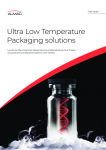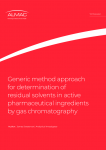‘Cognitive’ supply chain approach boosts safety, efficiency: FourKites

Proper supply chain management is not just important for a pharmaceutical operation’s bottom line. Especially when it comes to critical ingredients and medicines, and temperature-sensitive items like COVID-19 vaccines, shortages and interruptions can deprive patients of vital treatments.
Priya Rajagopalan (PR), chief product officer at FourKites, talked to Outsourcing-Pharma (OSP) about the challenges pharma companies face regarding their supply chains, and ways to improve the efficiency, safety and intelligence of their operations.
OSP: Could you please provide an overview of how the pharmaceutical supply chain industry has evolved in recent years?
PR: Over the past several decades in the US, the industry has consolidated down to three major categories of pharmaceutical manufacturers. These are consumer over-the-counter (OTC) medications, prescription medications, and the highly specialized biologics and custom formulations sector, which manufactures drugs directly from patient samples.
In terms of the supply chain, freight is moved by nearly every mode - except less-than-truckload (LTL) - including courier, parcel, air, truckload, ocean and rail. The cold chain plays an important role in the distribution of biologics, and importantly, vaccines.
All told, over 90% of US pharmaceuticals are distributed through the Big 3: Cardinal Health, AmerisourceBergen, McKesson Corp. In Fall 2020, Cardinal Health contracted to track 70m shipments annually with FourKites.
OSP: Your company has expertise in nearly every industry—how are the challenges associated with the pharma supply chain/logistics similar to food/beverage, paper goods, CPGs, etc.?
PR: There’s certainly some overlap, and some differences. For example, in the food and beverage industry, keeping products refrigerated and being able to monitor temperatures in-transit is just as critical to safety and value, as maintaining the cold chain is for the delivery of vaccines.
However, food loads frequently are mixed, and use multi-chamber trailers where different commodities are stored at different temperatures. With respect to pharma, the value of each individual unit, as well as the degree of refrigeration required is different with very specific temperature tolerance thresholds.
Monitoring the temperature of vaccines in transit will be critical to ensuring a successful distribution, and there have been a number of innovations developed over the past few months, such as Pfizer’s unique super-cooling container system.
OSP: What unique challenges does pharma face that other industries might not have to consider or tangle with?
PR: With pharma, it’s not so much just-in-time production, it’s just in case. It’s absolutely critical to have the inventory when people need it. It’s more difficult to plan demand for drugs, and pharma manufacturers aren’t quite as concerned about inventory costs. It’s about keeping lines running (inbound visibility), ensuring quality (temperature tracking and end-to-end visibility), and providing high levels of service to customers.
The cognitive supply chain that many healthcare companies are working to create aims to tackle issues such as these head on. Critical components include real-time supply chain visibility together with machine learning and artificial intelligence capabilities so that companies not only have better visibility into vaccines when in transit, but also the ability to identify key risks, mitigate issues as they arise or even predict and prevent them entirely.
The cognitive supply chain promises to play a huge role in more efficient, leaner pharma supply chains, especially in the last-mile arena, which has been underserved historically by technology. Today, because of the difficulty in predicting demand for vaccines and other critical medical supplies, the industry tends to hold a great deal of inventory in stock all over the world, so when demand spikes, product is relatively close to those in need.
But carrying all of that inventory comes at a high cost. A cognitive supply chain will help the industry predict demand, better manage and protect product in transit, and track and account for products as they are delivered. That should lead eventually to a leaner, more optimized pharma supply chain and better outcomes for consumers.
OSP: You’d mentioned that theft and hijacking of shipments is a concern—how often does that happen, and can you share any anecdotes?
PR: Rates of theft and hijacking vary considerably by region. Cross-border shipments are frequently vulnerable. In addition, the value of a product being shipped will have a major impact on how susceptible a shipment may be to getting targeted by criminal actors.
Considering the high value of COVID-19 vaccines and the amount of hype surrounding them, we expect that the degree of interest such actors display in these shipments will be much higher than the data might suggest, since that it’s based on entirely different products.
FourKites helps its customers prevent theft through its Secure Shipments feature, which helps keep shipments safely on track with security and compliance features, including the ability to set up custom zones, off-route alerts and more. This is a hugely appreciated feature for our customers, and we’ve generated almost 20,000 alerts for customers that have established custom zones for their trucks entering high-risk areas.
We’re already seeing this on the digital and cybersecurity front, and it’s likely only a matter of time before we start to see it showing up on the physical side, as well, particularly in some of the less stable regions of the world.
OSP: How can pharma firms and manufacturing partners work with FourKites or other supply-chain solution providers to better protect their product?
PR: The journey high-value drugs follow is frequently two-part: first departing on a cargo plane and then delivered by a truck. It is on the truck-based leg of the journey, from the airport to the hospital (or other final destination), that these shipments will likely be most vulnerable to both theft and temperature exceptions.
FourKites offers a number of tools that allow companies to keep tabs on both of these concerns. Our temperature tracking solution integrates directly with the onboard refrigeration units installed on each vehicle, and automatically relays that information back into the FourKites platform so that those tasked with ensuring temperature compliance of a given load can be notified immediately when a shipment exceeds its temperature tolerance; if action is taken quickly enough, there’s a chance that the shipment can be saved, unlike in the past when defective refrigeration units would only be discovered as the shipment was being unloaded.
On the physical safety side, FourKites’ Secure Shipments tool has a range of features that are designed to alert key stakeholders on a load the moment that shipment exhibits suspicious behavior. For instance, we closely monitor when a load departs from its planned route, and we offer the ability to notify security teams when a given load is entering a “hot zone”, where thefts more commonly occur.
OSP: What are the differences and similarities in vulnerabilities of raw materials, APIs and finished pharma products?
PR: With raw material and API availability, the key issue is to ensure that raw materials and APIs are consistently available and transported under the right conditions to avoid disruptions.
With respect to finished pharma products, product spoilage/expiration and shipment security are important factors. And, of course, OTC pharmaceutical manufacturers have to deal with the same strict OTIF requirements as other manufacturers when shipping to retail stores.
OSP: Let’s talk about the pandemic—what unique impacts has the virus had on the pharma supply chain?
PR: Just about every supply chain in every industry has been affected by the COVID pandemic, not just pharmaceuticals. Within the medical industry, however, many suppliers and manufacturers have had to find a way to ramp up production at the same time that new social distancing requirements are hampering their production capabilities in the first place. Essentially, they’ve been asked to do much more with much, much less.
One of the most inspiring examples of this in the past few months has been our customer 3M, which was recently named Supply Chain Dive’s Supplier of the Year for their rapid ramp-up in production of N95 respirator masks. In less than 12 months, they increased their total capacity from 22m per month in January 2020 to more than 95m per month by the end of December; that’s a more than fourfold increase at a time when most companies were still struggling to get their feet back underneath them. In order to pull it off, 3M placed a heavy emphasis on supply chain visibility, data-driven business processes and agile planning.
OSP: Professionals in the clinical study field talk about the negative impacts of COVID-19, but also a few opportunities it’s created, especially for tech and data-management companies. Can you share any (for lack of a better phrase) bright side to the pandemic?
PR: Overall, I think the pandemic has highlighted the need for end-to-end visibility across the supply chain, and sped up the adoption of technologies, like e-documents, which help with driver safety and create efficiencies.
OSP: Can you offer any advice for a pharmaceutical company or manufacturer looking to streamline/safeguard their SC for the coming months?
PR: Internally, we talk about our “Top-3 Must-Haves” for supply chain managers looking to effectively and efficiently distribute the vaccine. The first is complete end-to-end visibility, from the chain of command to the boots on the ground, including suppliers and customers both upstream and down.
The second is security monitoring: being able to identify whether there’s a delay or an off-route alert, and then quickly determining how to enact secure formal hand-offs in the process. Having an established process in place in the event a load is compromised is critical to being able to react swiftly and decisively in the face of unexpected events.
Finally, companies need to be able to deliver transparency to all parties throughout the supply chain network. In other words, if you operate in a silo as the manufacturer, that won’t help the end consumer ensure the vaccination is coming. Multi-party transparency and collaboration will be key.



















